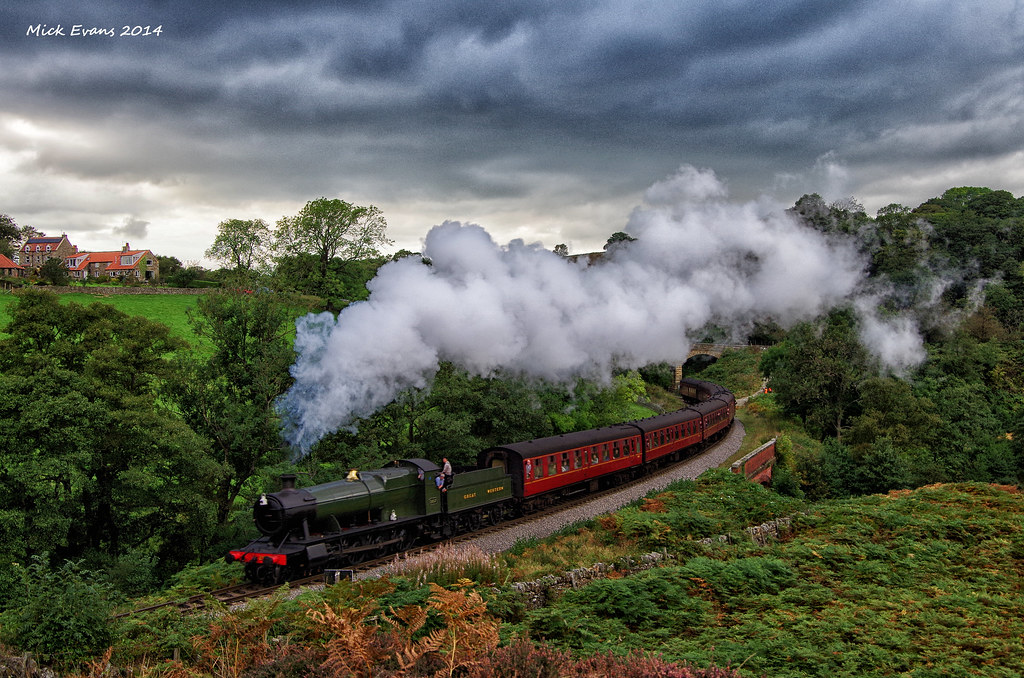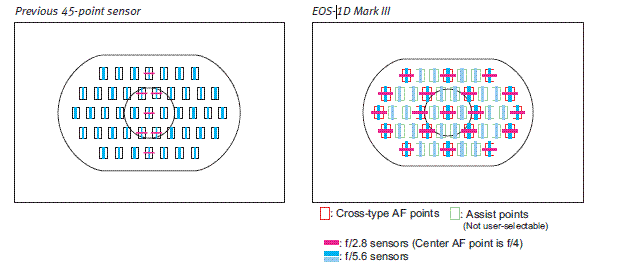|
Forum: Pentax SLR Lens Discussion
01-23-2011, 03:46 PM
|
| |
Good news everyone.. I just did a successfull repair on my defective SDM-focus DA* 16-50!
I recently got at tip about a blog post from [a certain banned user from this forum] that referred to another Chinese Pentax user on a forum thread who had successfully repaired his 16-50 with SDM failure. The repair is quite simple and consists of turning the back part of the SDM motor itself apparently to release it from a mechanical jam.
I admit, I din't have much belief in it, but decided to give it a go anyway. When the lens first failed (well over a year ago) I actually did dismantle it to check for errors myself, but I didn't dare to touch the small screw that seems to be glued on to the back part of the SDM motor. I assumed it was supposed to be a stationary item, and I didn't want to wreck it completely before sending it in for (the rather expensive) repair. OK, I didn't want to make a complete fool of myself to be honest. I did get a quote for repair abroad, and decided to put it on hold.
However, this Chinese guys success led me into giving the DIY attempt another go. The mechanics and plastic gears in the focusing part moved just fine with no apparent problems, just as it did the first time I opened the lens. I put a scredriver into the small screw head at the back of the motor and gave it a twist - and it moved slightly. The screw and the whole back part of the motor moves. It was really tight and not easy to turn, but I gave it a bit of massage back an forth before putting the lens together again. And, believe it or not - the lens focused again on my K-7! After well over a year just collecting dust and reminding me of really bad second hand deal, I now have a fully functioning DA* 16-50 again!!
Focusing now make a little bit of a squeeking noise, but the speed seems to be just as it was before it failed. I'm wondering if a bit of carefully added lubrication could make it even better and perhaps avoid it getting jammed again in the future. However I'm not sure exactly how the SDM motor is designed and I don't want to put lubrication onto parts that should not be exposed of it.
All in all I'm quite happy right now :) Having saved about 400 usd in repair costs, at least for now, and not having the dead DA* sitting on the shelf reminding me of a bad deal.. I wish I had dared fondling with the motor the first time I dismantled the lens though.
The original Chinese article can be found here (and google translate gives a nice chinglish mess of it): ÔÚWayliµÄÆô·¢ÏÂ,ÎÒÐÞÀíºÃÁËDA*16-50¾µÍ·SDM¹ÊÕÏ - ÎÞ¼ÉÂÛ̳
UPDATE: I've made a guide for this DIY repair online.
|
|
Forum: Post Your Photos!
09-29-2014, 11:06 AM
|
| |
A Great Western Railway engine No. 2807 steaming through Darnholm, nr. Goathland, North Yorkshire.
Image has obviously been photoshopped using the NIK tools.
 |
|
Forum: General Photography
06-25-2014, 10:39 PM
|
| |
I know exactly how you feel. I've only had my K200D since the first of may. One thing I did was to jump into the Single in June challenge. And let me tell you it's been a challenge. I've found though that I've gotten some decent pictures by just having the camera with me and shooting random things. I keep thinking I'm going to run out of things to shoot but I haven't yet. Everyday things that you tend to ignore look totally different through the view finder. Another thing I find fun is the alphabet game here. I find myself looking for different items for the letters every day.
|
|
Forum: Photographic Technique
01-20-2014, 01:54 AM
|
| |
| |
|
Forum: Troubleshooting and Beginner Help
04-03-2013, 08:00 AM
|
| |
There are two senses of the word "exposure":
1. Visual exposure - when the final image appears, more less, to match the naked eye's perception of the original scene's light level.
2. What I call, for the lack of a better word, "Data Exposure". That is the level of exposure that is optimal for capturing the maximum amount of editable data.
For myself I always shot RAW and ETTR. ETTR is simply always pushing the right side of the hgram to the very limits of the sensor and letting the shadows fall where they may. This is exposure in the second sense. Then later in PP I worry about getting a proper visual exposure.
So to answer your question - yes there is a big difference. In one you are trying to expose for a final visual image right out of the camera and in the other you are exposing in order to give your PP software maximum optimal data to work with at the back end of the process.
I hope this makes some sense - it's still early in the day for me.
|
|
Forum: Troubleshooting and Beginner Help
04-03-2013, 09:10 AM
|
| |
The sensor has one base ISO and all the other values involve some analog or digital amplification. When you move the exposure slider in Lightroom, it's digital amplification. I have read a few discussions about where the camera uses analog amplification and where it uses digital. They always turned into an academic argument - they were talking about math and histograms but no photos. I'm not sure who was right, but I suspect if I really wanted to know, it would be easier to set up a test scene, take a few shots and see what you get.
I find it is easier to have one shooting habit because you have other things to think about when shooting. I do what Wildman does, expose just short of getting blinking highlights (overexposed areas). Sometimes those brightest areas are unimportant, so I can raise exposure even further. (I am careful about overexposing pure reds and blues in my main subject, like in a flower shot. The camera meter can be fooled here. Look at the RGB histogram if you are not sure.) Then I have enough information to process the shot. I do it all the time even when it isn't an important shot.
If I start to need higher ISOs, I worry a lot less about using the lens at its sharpest aperture. I would rather have a shot at f4 and ISO 800 than f8 and ISO 3200.
Shutter speed is one reason to break the habit. You may have a situation where you need a minimum shutter speed to capture a moving subject. In that case, I would consider taking an underexposed shot with that minimum shutter speed and increasing exposure later in processing.
|
|
Forum: Troubleshooting and Beginner Help
04-03-2013, 09:58 AM
|
| |
Increasing ISO will always increase the overall noise and decrease the dynamic range; the actual amount will depend on the sensor. Increasing the exposure in PP will also increase the noise, especially in the dark areas where noise is more visible. Depending on the situation and especially the kind of de-noise techniques used, either one can produce good results. The best way is to experiment and compare the final images, remembering that in most cases a correct in-camera exposure will probably be better in close scrutiny.
Noise is one of several parameters in an image, that include dynamic range, overall brightness, motion blur, depth of field, etc. Taking a photograph is a balancing act on desired final image, e.g. stopping motion, blurring motion, maximizing DOF, intentionally over/under exposing, etc.
In a controlled environment (e.g. studio) you simply set the proper parameters (aperture, speed, ISO) for the desired effect and adjust your lighting for correct exposure. In uncontrolled environments, you have to compromise some of the variables, like loosing DOF to get more speed, increasing noise (using a higher ISO) to get both speed and DOF, etc. Which one is right will depend on what is more important for the particular image.
Modern DSLR capture 12 or 14 bit data that theoretically can provide 12 or 14 stops of dynamic range. If a scene has less than that, exposing to the right, essentially slightly overexposing without blowing the highlights, gives you some insurance that you can correct the exposure if need with less visible effects, since in most cases you will be decreasing it and with it decreasing the noise also.
|
|
Forum: Troubleshooting and Beginner Help
03-15-2013, 05:54 AM
|
| |
There's two items to consider - focus points and focus point size. More focus points means the focus point size must be smaller.
Let's start with the number of focus points - the reason for this is focus tracking. See examples below:


The first image is a Olympus E-3 with 11 points. The second is the 1D Mk3 with 40 something points. See the density difference? If you are tracking a bird with one point on the E-3, and it moves into one of the empty spaces in the AF grid, your E-3 will stop tracking it. It might not even be able to start tracking again when the bird reaches the next AF point. This is partly the processing requirements (to recognize the same subject). The 1D Mk3 doesn't have as much "empty space". Thus - it will track better.
This is most applicable to tracking - users of single point AF won't notice the difference between these two (except for focus point size issues). Without a large number of focus points, Predictive AF is not going to be reliable.
As for AF point size - the k-5 is notorious for having "large" focus points. A large focus sensor can be problematic because the single sensor can "see" multiple objects and will select one of those objects to focus onto - for example, if you are taking picture of a bird who is somewhat far away, the focus sensor might focus on the bird.. or something it also sees in the foreground (branches) or background (branches). It doesn't know what YOU want to focus on, so it'll just guess. Smaller focus points means you have finer control.
Smaller focus points have it's own issues, because if you don't have a good density of them, you have to use focus and recompose. For example, in the E-3 image - if those points were small, then if I wanted to take a picture of someone's face where the eyes are not at the center of the frame, there is no focus point I could select to focus on the eyes. I would have to focus and recompose.
In summary - quantity of focus points matter most when dealing with tracking. When dealing with single point autofocus, quantity of focus points doesn't really matter. Focus point size must also be taken into consideration.
|
|
Forum: Pentax DSLR Discussion
02-28-2013, 06:07 AM
|
| |
They move up to 360 degrees per day, i.e. 1/240 degrees per second. Might not sound like much but one pixel on a K5 with a 14mm lens is around 1/60 degree so that gives you theoretically 4 seconds of exposure before their motion becomes noticeable when pixel peeping. 4 seconds isn't very long for a night exposure - the bigger the aperture and the higher the ISO, the better.
|
|
Forum: Troubleshooting and Beginner Help
10-29-2012, 10:32 AM
|
| |
If you want the full explanation of the number and why it's an unusual scale, it's here. That's interesting but more than you really need. The basic idea is that like Oxidized said, it measures the light allowed into the camera. The light is controlled by the aperture on the lens, which opens or closes. Because lenses can vary a lot in construction, focal length, etc., the f number takes all those variables and turns them into one.
When it comes down to actual photos, smaller f numbers mean more light and less depth of field (part of the image that's in sharp focus). Here's a quick example with a 55mm lens at f1.4, about 20 inches away:

The photographer often has to balance letting in more light against not enough depth of field, choosing an aperture that works the best for each shot.
Another consideration is image quality, which varies as you change the aperture. This is from one of my lens tests. The camera is on a tripod, focused carefully on newspapers taped to a wall. The image is a series of crops from one corner of each shot, pasted together. The only thing that changes in each shot is the lens aperture. In this case, the left side is at f2.8, then I stop down one full stop (f4, f5.6, f8, f11).

As you can see, the image gets sharper at smaller apertures. This is not depth of field, it's just a property of all lenses that they get better at smaller apertures. Other aspects of quality get better too. Contrast and colors get better. This lens has some light loss in the corners at the widest apertures, so you can see how the corners get brighter with smaller apertures. If I had continued taking shots at even smaller apertures (f16, f22, f27, f32) another factor (diffraction) would have made the images softer.
Don't get completely overwhelmed by the f-number, especially the effect on quality. If your shot has the right focus, depth of field and no camera shake, no one will notice the slight difference another aperture might have made. Everyone will notice when focus is wrong.
|
|
Forum: Troubleshooting and Beginner Help
10-29-2012, 09:20 AM
|
| |
F designates a measure of the maximum amount of light that the lens allows in. The smaller the F value, the more light the lens will be able to let in. In the example above it means that if you were set the zoom lens at 55mm then you will not be able to go lower than F4 and if you zoom in to 300mm you would have further limit the light entering the lens bcs you would have to be at F5.8. Zooms tend to have larger F values as, while primes allow for smaller F values (more light can enter).
As you go into higher F values less light enters, so you have to compensate by lowering shutter speed (may need tripod). High F-values produce bigger depth of field (more stuff in the picture will be 'in focus' and sharp). This is good for shooting scenes like landscapes.
I hope this helps! :)
|











